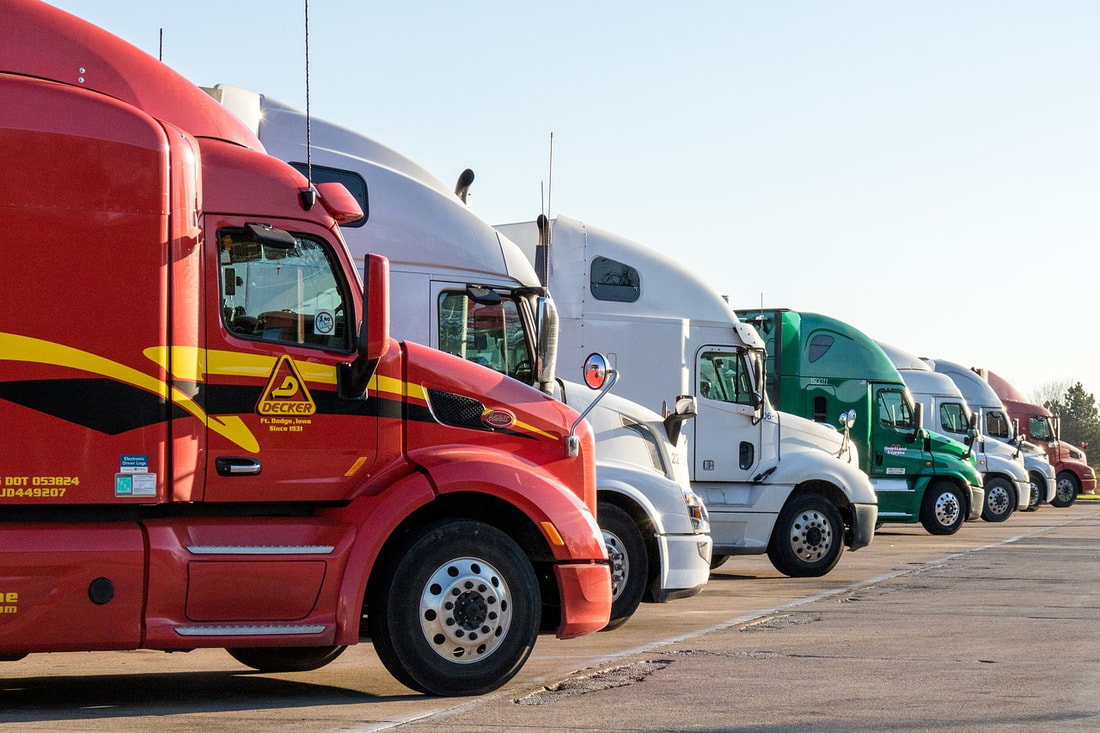Freight Terms
20+ Freight Terms Everyone Should Know
Freight terms can be confusing.
Acronyms, abbreviations, shorthand and jargon make up the freight and billing lexicon we use in the shipping world. Many of these commonly used terms can leave people scratching their heads. In this post, I’ll help to clear up questions about some of the most popular freight and billing terms you might see on shipping documents.

A driver that transports product to any location at any time without a schedule or route is known in the industry as an over-the-road (OTR) carrier.
Common Freight and Billing Terms
Below are some of the terms everyone working in (or with) the freight industry should know.
BOL
Bill of Lading
A legal document between the shipper of a particular good and the carrier. A BOL details the type, quantity and destination of the good being carried.The bill of lading also serves as a receipt of shipment when the good is delivered to its predetermined destination. This document must accompany the shipped goods (no matter the form of transportation) and must be signed by an authorized representative from the carrier, shipper and receiver.
Consignee
Consignee
This is the individual or business that receives the freight being shipped.DE PPD or DSTNTN-PPD
Destination Prepaid
This means that the buyer is taking delivery of goods being shipped by a supplier. After the goods arrive at the buyer's receiving dock, the supplier pays the shipping costs.FFA
Free Freight Allowance or Forward Freight Agreement
Both meanings here are associated with how much a customer will be charged for freight. Free Freight Allowance allows for discounted shipping charges (usually issued when a customer reaches a certain volume or dollar amount). A Forward Freight Agreement is used when both parties agree on freight charges for future delivery. Since freight rates are always changing, both sides are gambling on rates going up or down (in their favor) at the time of shipment.Freeze Protect
Freeze Protect
This means the shipper is requesting freeze protection while the product is in transit. The product will not be in an environment where the temperature will drop below 32 degrees. Only certain carriers offer this type of protection.Freight Collect
Freight Collect
This term means the freight will be paid by the person receiving the shipment.FOB
Free on Board
This acronym officially stands for Free on Board as defined by the Uniform Commercial Code but informally you may also hear Freight On Board. The term FOB is commonly used to indicate who pays loading and transportation costs, and/or the point at which the responsibility of the goods transfers from shipper to buyer.FOB Shipping Point, FOB-SP or FOB Origin
FOB Shipping Point
Indicates the buyer pays shipping cost and takes responsibility for the goods as soon as the goods leave the seller's premises.FOB Destination
FOB Destination
Designates the seller will pay shipping costs and remain responsible for the goods until the buyer takes possession.LTL and TL
Less Than Truckload and Truckload
LTL is an acronym for Less Than Truckload. This means the shipment does not require a full 48 or 53 foot trailer. There are many carriers that specialize in or offer this service.Like full truckload carriers, LTL carriers specialize in a variety of services such as lift gate and residential pick-ups; deliveries; guaranteed services; protect-from-freeze; transit and bottom-line-cost to name a few. Rates for LTL freight are determined by class, weight, pick up and destination zip code.
TL is an acronym for Truckload. The quantity of freight required to fill a trailer; usually more than 10,000 pounds.
ORG
Origin
This identifies the starting location for the freight or shipment.PPA, PP&A or PPD & Add
Prepaid and Add
This means the shipper pays for the freight charges using their preferred carrier and then passes along full (or partial) charges by adding the charges to customer's invoice for payment.PPD 3rd
Prepaid Third Party
This is when the shipper pays for the shipping charges through a 3rd party broker logistics company.PP-PRTL
Prepaid Partial Truckload
When a load is too big to meet LTL standards but is still shy of a full load, it's called a partial truckload. If you see PP-PRTL, it means the customer agrees to prepay the shipping charges for a partial truckload.PRO Number
Pro Number
Sequential numbering system that is used to identify freight bills. A Pro number is like a social security number for your shipment because it is unique to every individual shipment.TPB
Third Party Billing
This is a scenario where neither the shipper nor the consignee is responsible for paying the freight charges. Instead there is a third party who is responsible for the charges.ZDD
Zero Delay Delivery
Basically this one means fast shipping with the goal of items being delivered on time.
Need a Freight Term Defined?
I hope you found what you were looking for. Shipping stuff seems easy enough, but sometimes it feels like you have to learn a secret new language just to get a freight bill paid. What other terms have you seen on freight paperwork? Let's connect so I can add the term and definition to my post.
Updated: 12/12/2024 | Published: 4/11/2013
by Aaron Pascarella
on Shipping & Freight